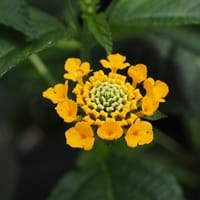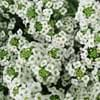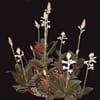Life Span
Perennial
Perennial
Type
Tender Perennial
Flowering Plants, Fruits, Trees
Origin
South America
Central Asia
Types
Alba, Dallas Red, Miss Huff, New Gold
Aceymac apple, Bailey Sweet apple, Dabinett apple, Nehou apple
Habitat
agricultural areas, Forest edges, Grassland, riparian zones, secondary forest
Hillside
USDA Hardiness Zone
7-15
5-8
Sunset Zone
H1, H2, 5, 6, 7, 8, 9, 10, 11, 12, 13, 14, 15, 16, 17, 18, 19, 20, 21, 22, 23, 24
A1, A2, A3, 8, 9, 10, 11, 12, 13, 14, 15, 16, 17, 18, 19, 20, 21, 22, 23, 24
Habit
Cushion/Mound-forming
Oval or Rounded
Flower Color
Yellow, Hot Pink, Coral
White
Flower Color Modifier
Bicolor
Not Available
Fruit Color
Not Available
Green, Red
Leaf Color in Spring
Dark Green
Dark Green
Leaf Color in Summer
Dark Green
Green
Leaf Color in Fall
Dark Green
Brown, Green, Light Yellow
Leaf Color in Winter
Light Green
Not Available
Leaf Shape
Egg-shaped
Oblong
Plant Season
Spring, Summer, Fall, Winter
Spring
Sunlight
Full Sun, Partial Sun
Full Sun, Partial shade
Type of Soil
Clay, Loam, Sand
Loamy
The pH of Soil
Acidic, Neutral, Alkaline
Neutral
Soil Drainage
Well drained
Well drained
Bloom Time
Indeterminate
Fall, Summer
Tolerances
Drought
Drought
Where to Plant?
Container, Ground, Pot
Ground
How to Plant?
Cuttings, Seedlings
Grafting, Seedlings, Transplanting
Plant Maintenance
Medium
Medium
Watering Requirements
Keep the Soil well drained, Requires regular watering
Medium
In Summer
Lots of watering
Lots of watering
In Spring
Moderate
Moderate
In Winter
Average Water
Average Water
Soil pH
Acidic, Neutral, Alkaline
Neutral
Soil Type
Clay, Loam, Sand
Loamy
Soil Drainage Capacity
Well drained
Well drained
Sun Exposure
Full Sun, Partial Sun
Full Sun, Partial shade
Pruning
Remove damaged leaves, Remove dead branches, Remove dead leaves
Prune when plant is dormant, Remove dead or diseased plant parts
Fertilizers
All-Purpose Liquid Fertilizer
All-Purpose Liquid Fertilizer
Pests and Diseases
Red blotch
Aphids, Canker, Caterpillars, Powdery mildew, Root rot
Plant Tolerance
Drought
Drought
Flower Petal Number
Single
Single
Foliage Texture
Medium
Medium
Foliage Sheen
Matte
Matte
Attracts
Bees, Birds, Bugs, Butterflies, pollinators
Birds
Allergy
Dermatitis, Skin irritation, Toxic, Vomiting
Mouth itching, Throat itching
Aesthetic Uses
Beautification, Decorating walls, Hanging Basket, Used as an interior landscaping species, Used for decorating walls, fences, gates, hedges, etc.
Not Available
Beauty Benefits
Not Available
Not Available
Environmental Uses
Air purification
Air purification
Medicinal Uses
Antiseptic, Pain killer, Swelling, Ulcers
Cancer, constipation, Diabetes, Diarrhea, Dysentry, Fever, Heart problems, Tooth ache
Part of Plant Used
Flowers, Fruits, Leaves
Fruits
Other Uses
Decoration Purposes, Paper pulp, Traditional medicine
Used As Food, Wood is used for making furniture
Used As Indoor Plant
Yes
No
Used As Outdoor Plant
Yes
Yes
Garden Design
Bedding Plant, Container, Feature Plant, Foundation, Mixed Border, Topiary / Bonsai / Espalier, Tropical
Fruit / Fruit Tree, Shade Trees, Showy Tree
Botanical Name
LANTANA camara 'Miss Huff'
Malus domestica
Common Name
Lantana, Miss Huff Lantana
Apple Tree
In Hindi
lantana
सेब का वृक्ष
In German
Wandelröschen
Apfelbaum
In French
Lantana camara
Pommier
In Spanish
Lantana camara
Manzano
In Greek
Lantana camara
μηλιά
In Portuguese
Lantana camara
Macieira
In Polish
Lantana pospolita
jabłoń
In Latin
lantana camara
Arbore
Phylum
Magnoliophyta
Magnoliophyta
Class
Magnoliopsida
Magnoliopsida
Family
Verbenaceae
Rosaceae
Clade
Angiosperms, Asterids, Eudicots
Angiosperms, Eudicots, Rosids
Tribe
Not Available
Not Available
Subfamily
Not Available
Not Available
Number of Species
Not Available
Importance of Miss Huff Lantana and Apple Tree
Want to have the most appropriate plant for your garden? You might want to know the importance of Miss Huff Lantana and Apple Tree. Basically, these two plants vary in many aspects. Compare Miss Huff Lantana and Apple Tree as they differ in many characteristics such as their life, care, benefits, facts, etc. Every gardener must at least have the slightest clue about the plants he wants to plant in his garden. Compare their benefits, which differ in many ways like facts and uses. The medicinal use of Miss Huff Lantana is Antiseptic, Pain killer, Swelling and Ulcers whereas of Apple Tree is Cancer, constipation, Diabetes, Diarrhea, Dysentry, Fever, Heart problems and Tooth ache. Miss Huff Lantana has beauty benefits as follows: Not Available while Apple Tree has beauty benefits as follows: Not Available.
Compare Facts of Miss Huff Lantana vs Apple Tree
How to choose the best garden plant for your garden depending upon its facts? Here garden plant comparison will help you to solve this query. Compare the facts of Miss Huff Lantana vs Apple Tree and know which one to choose. As garden plants have benefits and other uses, allergy is also a major drawback of plants for some people. Allergic reactions of Miss Huff Lantana are Dermatitis, Skin irritation, Toxic and Vomiting whereas of Apple Tree have Mouth itching and Throat itching respectively. Having a fruit bearing plant in your garden can be a plus point of your garden. Miss Huff Lantana has no showy fruits and Apple Tree has showy fruits. Also Miss Huff Lantana is not flowering and Apple Tree is flowering. You can compare Miss Huff Lantana and Apple Tree facts and facts of other plants too.





